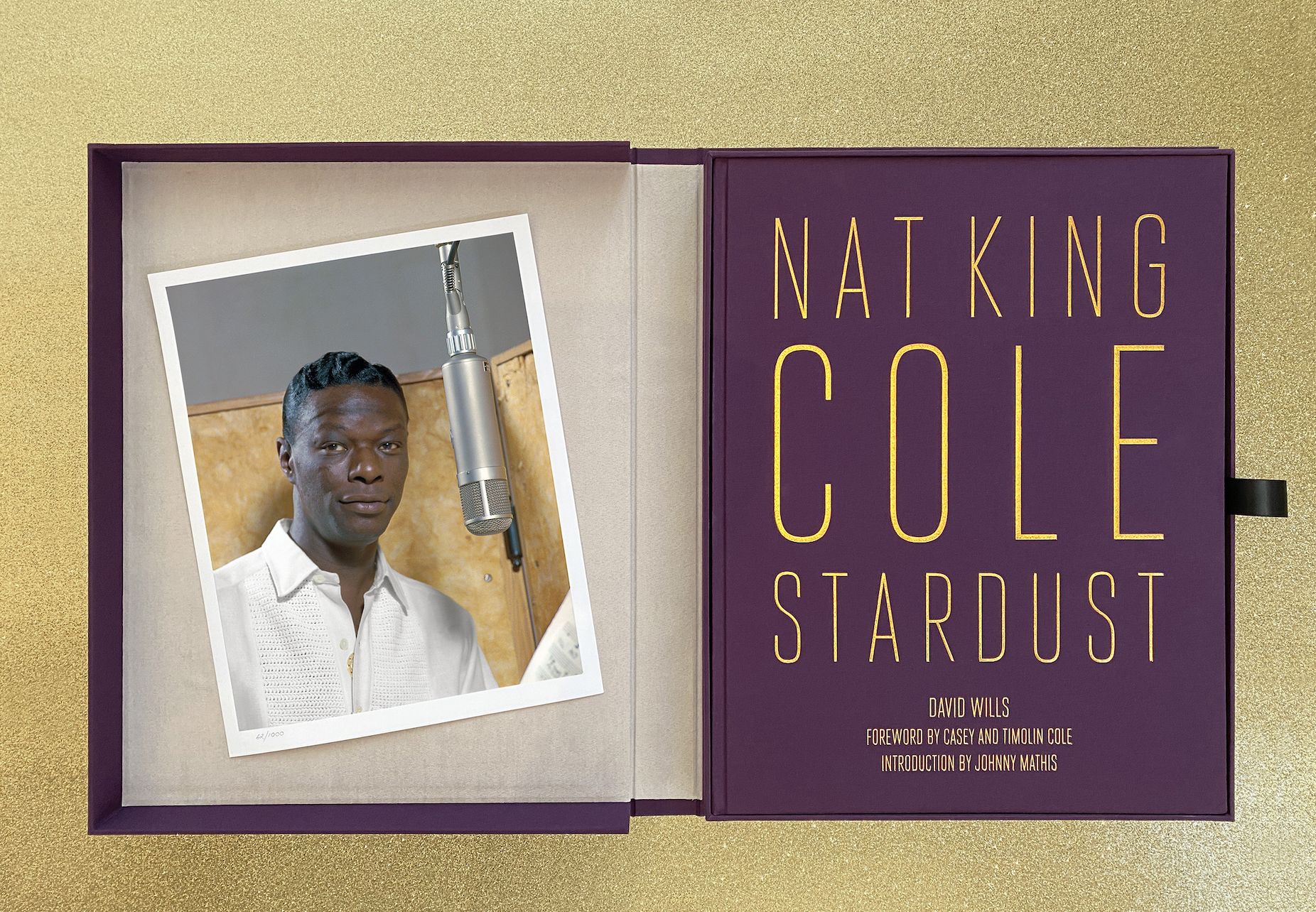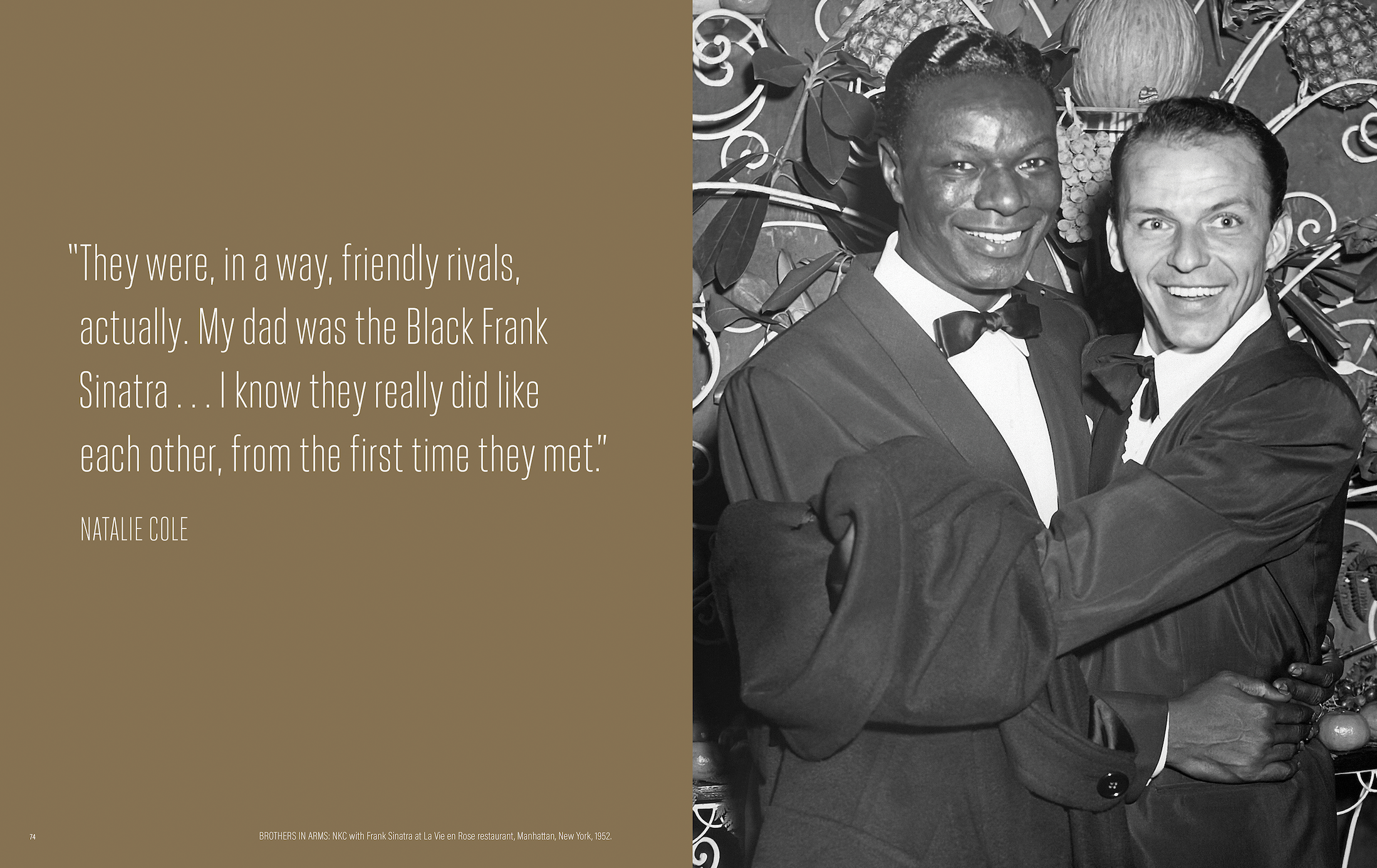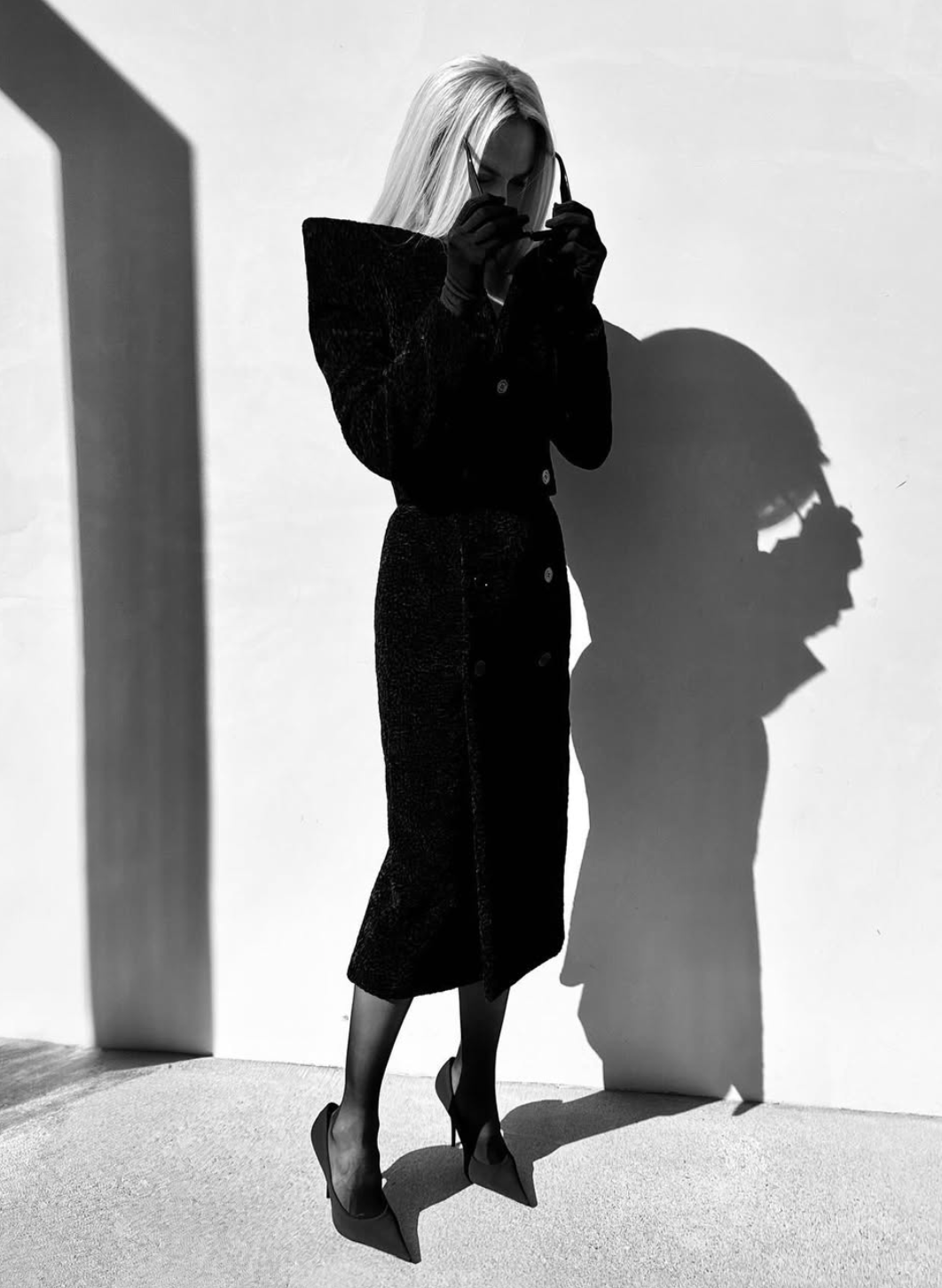Author David Wills
In honor of Nat King Cole’s extraordinary legacy as a singer, jazz musician, style icon, and civil rights advocate the book, NAT KING COLE: STARDUST by David Wills will be the first photography book ever published on the legendary entertainer. Australian born author, photographic preservationist and an editor David Wills has accrued one of the largest independent archives of original photographs.
What’s more exciting is that the book is created in collaboration with the family of Nat King Cole, Johnny Mathis has written an introduction for the book and Cole’s daughters, Casey and Timolin, have written the foreword. Celebrity contributors include Quincy Jones and Leslie Uggams.
Author David Wills and I sat down to chat about the book and some of the highlights.
Giulia: What inspired you to start writing?
David: My initial inspiration for writing didn’t come from writing itself—but from my love of photography books. As a small child, instead of frequenting toy stores, I was always in libraries and bookstores. I even used to make my own books out of butcher’s paper. That’s where I found beauty in life. To me books were like a portal to other fascinating worlds.
Giulia: Your new release, Nat King Cole: Stardust. What was your inspiration for this book?
David: The book was essentially a labor of love to commemorate Nat King Cole’s 100th birthday. I was originally approached about doing the book by the representative for Cole’s family. I was so honored. At the time I was surprised to learn that the definitive photographic retrospective had never been published. Johnny Mathis wrote a beautiful introduction and Cole’s daughters, Casey and Timolin, provided a heartfelt foreword. Casey and Timolin were only three years old when their father passed away. Therefore—their personal memories aside—they have primarily come to know him through family photos and stories told to them by their late mother, Maria. What they brought to my attention was the generosity and humility of their father, and the radiating effect that had—still has—on anyone whose lives he ever touched. Casey and Timolin have done an extraordinary job carrying on their father’s legacy with their non-profit foundation Nat King Cole Generation Hope, which provides access to music education for children with the greatest need. This book was essentially their idea and was made possible because of them and their love for their father and dedication to preserving his legacy.
Giulia: How did you come up with the title for this book?
David: “Stardust” is my favorite Nat King Cole song, and it just seemed an apt title for the book—a metaphor for the magic of his star presence and the soothing quality of his voice. The song has such a serene, dreamlike quality. Every time I hear it I feel like I’m being sprinkled with fairy dust and lullabied by a beautiful whisper. Cole’s producer, Lee Gillette, urged him to record the standard, composed by Hoagy Carmichael, in 1957. Cole initially resisted, even though he had been singing it on stage since 1954. He considered the number to have been covered, and well, by Ella Fitzgerald, Frank Sinatra, and others. He did one take, and subsequently sang it on the October 1, 1957 episode of his TV show. The single went to #79 on the US pop chart, #24 in the UK, but grew in status over the years to become nearly everyone’s preferred version. The poignant strings introduce Cole’s mellow tones: “And now the purple dust of twilight time. ...”
Giulia: What was your writing process like?
David: Putting together a photo book, particularly one of this size, requires you to wear many hats as an author. Writing is of course an integral part of telling the story, but each photograph is also worth a thousand words. I generally start with research and interviews, put together a skeleton essay, and then beef it out for the final version. Needless to say you make adjustments for many months until you feel it’s just right. That said, I always find it difficult to reread my books, after they have been published, as there are always things I wish I could change.
Giulia: Tell us about the process for coming up with the cover?
David: For the cover I wanted to capture the essence of Nat King Cole as a gentleman, an entertainer, and particularly as a style icon. At the height of his fame, Cole earned a reputation as one of the most sharply-dressed men in the business. In fact, the term “natty dresser” was apparently coined in reference to Nat. Therefore, I felt the photo of Cole wearing the tuxedo—chic black and white against the drama of a blazing red backdrop—was perfect. A cropped version of the image originally appeared on the cover of the soundtrack for St. Louis Blues (1958). When I discovered that Capitol Records had the original transparency in their photo archive, I was thrilled to be given the opportunity to reproduce it for the book’s cover.
Giulia: What were the key challenges writing this book?
David: When writing a book about any notable person, you always feel an enormous responsibility to represent them in a way that is both entertaining and educational. I’m also very mindful of accentuating the positive. These extraordinary entertainers—whether it be someone like Nat King Cole, Frank Sinatra, Marilyn Monroe, or Audrey Hepburn—are gifts to the world, and gifts that continue to keep on giving. They should be treated with love and respect. Also, as an author it’s always an interesting challenge to do a photo book on a man. This may sound odd, but with female subjects (like Marilyn or Audrey) your work is done for you—because of the variation in hairstyle, makeup and costume. With men you have to work harder. In the case of Nat King Cole, I was extremely fortunate that the body of photography was so strong and varied.
It was very important to me to highlight Cole’s significant role in the civil rights movement. Though not exactly on the front lines, he brought black and white people together through his music. For millions of white Americans Nat King Cole was their first experience of a black person being part of their household, their daily soundtrack—whether it was watching him on TV or listening to his records. Also, just by being himself, he broke certain stereotypes unfairly placed on black people through decades of injustice. He was sophisticated, he was elegant, he was charming—he was extraordinarily talented. Basically, he was just himself—a beautiful and refined human being. It was a uniting experience for Americans.
Giulia: What were the highlights of the book?
David: Johnny Mathis’s introduction, Casey and Timolin’s foreword, and contributions from people like Quincy Jones and Leslie Uggams. The book also includes rare personal letters and telegrams from President John F. Kennedy, President Dwight D. Eisenhower, President Lyndon B. Johnson, Jackie Kennedy, and Martin Luther King Jr. One of the main highlights of Nat King Cole: Stardust is definitely the extraordinary photography. As the book is extremely large in format—14x17.75 inches—it was very important that the images be of the most exceptional quality. For this reason, we went back to original negatives, transparencies and photographs. In some cases, images had to be scanned and laboriously cleaned and color corrected to restore them to their original vibrancy. Capitol Records was wonderful in their understanding of our need for first-generation source material, and the book contains many never-before-seen or published images from their archive.
Giulia: Describe your writing space.
David: I have an office in Palm Springs, but my writing space is essentially wherever life takes me. I spend a lot of time on the Sunshine Coast in Australia, so I work there too. I find it’s important to vary my creative environment.
Giulia: What are you currently working on?
David: Currently book projects on Palm Springs, Nancy Sinatra, Alfred Hitchcock’s Psycho, the fashion photographer Henry Clarke, and a few others in development.
Giulia: Where can readers purchase this book?
David: The book will be available on Amazon and also through our website nailorwills.com
NAT KING COLE: STARDUST features over 200 photographs—many never before seen or published and digitally restored from their original negatives and transparencies. It will also include rare images from the Capitol Records photo archive. Cole’s estate has also provided never-before-seen letters and telegrams from President John F. Kennedy, President Dwight D. Eisenhower, President Lyndon B. Johnson, Jackie Kennedy, and Martin Luther King Jr.






















